The railroad began a slow resurgence when the Southern Mineral Products Corporation (SMP) began extracting titanium dioxide from a deposit of ilmenite ore near Piney River in 1931. SMP established a small mine, mill and chemical plant at Piney River to manufacture titanium dioxide pigment, which is a substitute for white lead in producing paint.
During the early years of processing titanium dioxide, the plant shipped very few hopper car loads since the method of extracting the mineral was new and very costly. For a while, neither the plant nor the railroad prospered from the venture. In 1944 this facility and its mine was acquired by the American Cyanamid Company (ACC). ACC enlarged and modernized the works and for two decades it was the VBR’s largest customer. Outbound loads consisted of titanium dioxide pigment. Inbound shipments included coal, sulphur, sulphuric acid, aluminum sulphate, caustic soda, limestone and scrap iron.

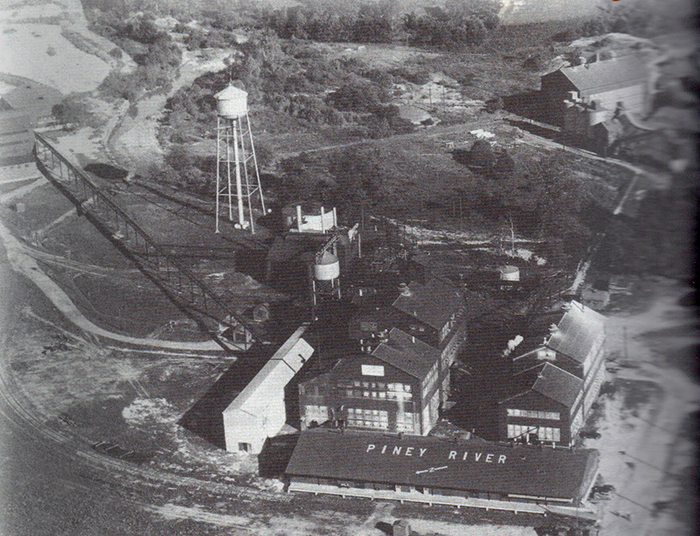
Photo Credit: Stephen Lamanna
Courtesy of Paul Saunders – “Heartbeats of Nelson”
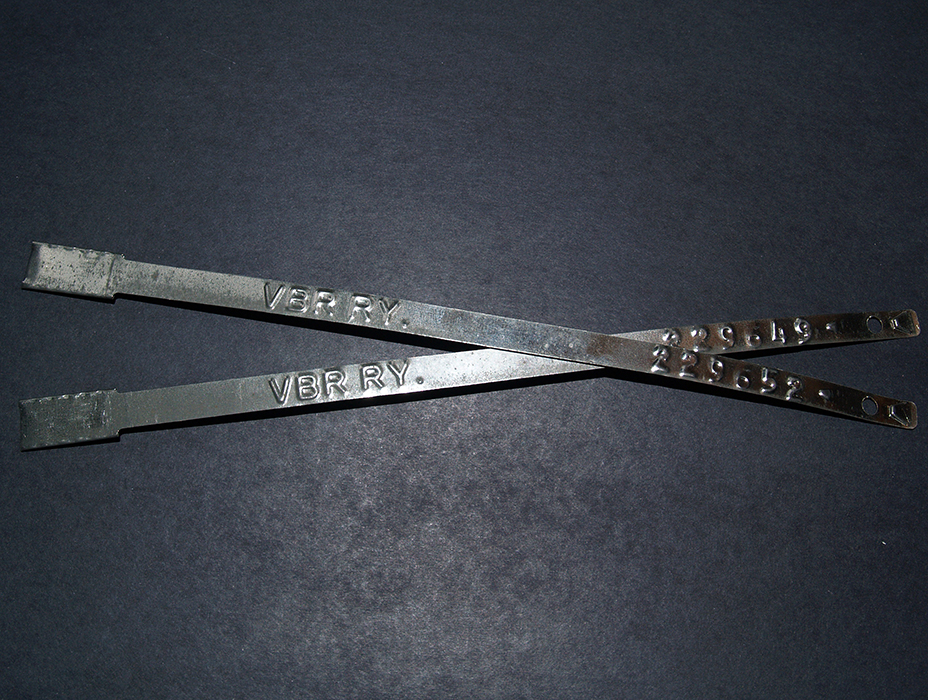
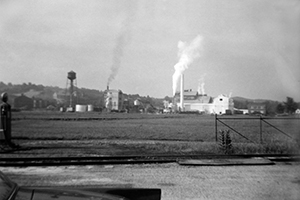
As the years progressed it was determined that foreign ore and domestic waste issues made the Piney River plant non-competitive. On December 9, 1970 American Cyanamid announced that the Piney River facility would be shut down. The final day came on June 15, 1971, and operations were relocated to Savannah, Georgia. With that decision, the revenues of the tiny VBR dropped drastically.
In 1983 the former ACC site was declared a “Superfund Site” when highly toxic pollutants were found in the plant’s settling ponds, waste water lagoons and waste disposal areas. Between 1977 and 1981, with the toxins penetrating natural springs flowing into the Piney River, an astonishing 200,000 fish had been killed off as a result of the ACC chemical contamination of the Piney and Tye Rivers.
In 1935 an aplite vein was discovered that extended some 10 to 12 miles along the VBR right-of-way, making it the largest such deposit known to exist in the United States. Aplite, an ore of quartz and feldspar, is used in the manufacture of glass, rock wool insulation and as a flux (or binder) in producing bricks. It is also used in the production of roofing materials.
In 1939, a few years after the aplite was discovered, the Dominion Mineral Division of the Riverton Lime & Stone Company, followed by Carolina Minerals (CM) in 1941, both built plants to extract aplite from the area and used the VBR to haul its product. By 1952 Carolina Minerals became part of the International Minerals & Chemical Company (IMC). In 1959, a third aplite plant, Buffalo Mines, was built just off the VBR line heading toward Massies Mill. A new branch was built to serve that facility, but production problems related to excessive iron content of the deposit soon caused Buffalo Mines to shut down in the early-1960’s.
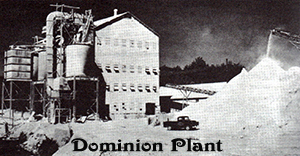
Collection of Mrs. Lee Norvelle;
Courtesy of Paul Saunders – “Heartbeats of Nelson”
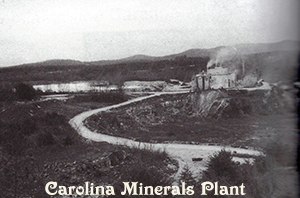
Courtesy of Paul Saunders – “Heartbeats of Nelson”
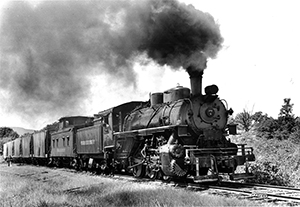
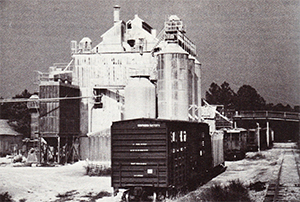
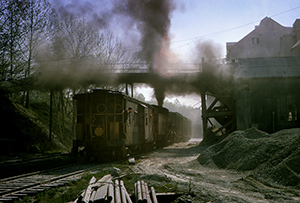
Although a major revenue earner for the railroad, the aplite plants were a source of environmental concern. Everywhere as far as the eye could see, tracks, ground, buildings, freight cars and trees were covered with white, powdery aplite dust. Fate intervened once again, and in the early-1970’s, the Dominion aplite operation closed down, further adding to the decline of the VBR. For a few more years, that left the IMC plant as the only remaining on-line shipper.
Today, the only survivor of the various ore plants at Piney River is the rock-crushing operation at the old Dominion Minerals site. The facility supplies stone for various construction needs and has never required the services of a railroad as all product is shipped via truck. The property has changed ownership several times over the years, and presently it is known as the Boxley Materials Company.
During the night of August 19-20, 1969 Hurricane Camille devastated Nelson County, causing 153 deaths in that area of Virginia alone, with a world-record rainfall of 27 inches in a 3 – 5 hour period. The rainfall came so fast and so heavily, that birds literally drowned in the trees. Five inches of that deluge came down in an amazing 30 minutes in the North Fork area of the Tye River. Known as “The Flood” by local folk, the hurricane damaged some of the VBR’s bridges and twisted miles of track, forcing the railroad to spend hard earned revenue dollars to reopen the line in order to serve its shippers and thereby remain in operation. It was the first of several catastrophic events to hit the VBR in rapid succession followed by the closing of the American Cyanamid and the Dominion Mineral plants.
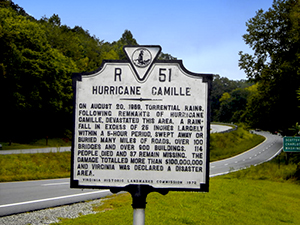
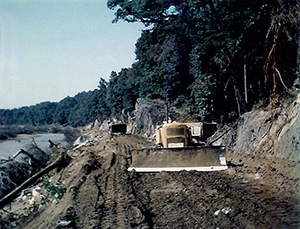
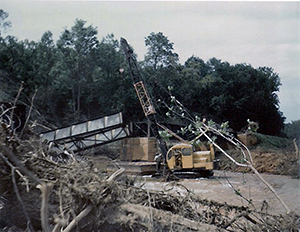
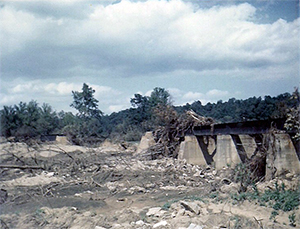
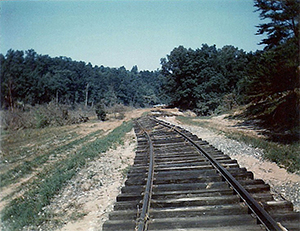
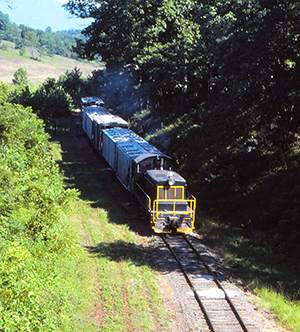
In May 1980, the IMC Chemical Group announced the closing of their aplite plant and mine at Piney River. This was the last of the on-line industries along the Virginia Blue Ridge Railway. The railroad was embargoed on July 1, 1980, and was abandoned soon thereafter. The inevitable scrapping of the railroad would bring about a somber end to the 65-year existence of “Th’ Blue Ridge”.